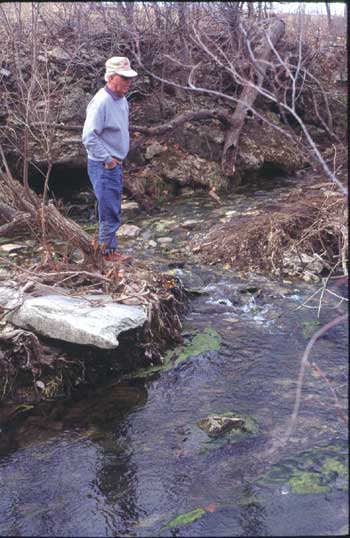| Kansas Geological Survey | Fall 1997 |
Vol. 3.3 |
|
Kansas Water Resources and Sustainability Issues
CONTENTS Water Resources–page 1
|
Several streams, creeks, and rivers in central and western Kansas carry less water than they did 25 years ago—the Arkansas River is a classic example—because of overdevelopment of water resources.
Local ground-water management districts have recently moved toward sustainable management by amending their safe-yield regulations to include the natural ground-water discharge to streams when evaluating ground-water-permit applications. This new measure, together with the establishment of state standards for minimum desirable streamflow, should provide needed protection to the riverine-riparian ecosystem. Sophocleous wrote four chapters and edited six others by scientists from
the Survey, Kansas State University, University of Kansas, and the Kansas
Water Office. Written primarily for water users, policymakers, and water
regulators, this semitechnical volume also provides background information
about hydrologic systems and water-resource management in Kansas. Other
chapters in the book address confined aquifers, water chemistry, surface
waters, effects on agriculture, climate change, and the complexity of
hydrologic systems. “Management of ground water and surface water using a holistic approach that considers the entire ecosystem is the key to the future,” says Sophocleous. “The era of rapid exploitation of water resources is over and a new one of sustainable use is now taking hold in Kansas.” |
|
Palmer Spring in Chase County, an example of natural
discharge of ground water. |
 |
| Online February 10, 2003 Comments to: lbrosius@kgs.ku.edu Kansas Geological Survey URL:http://www.kgs.ku.edu/Publications/GeoRecord/1997/vol3.3/Page1.html |